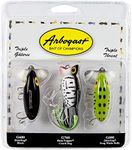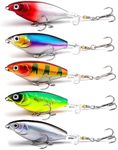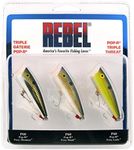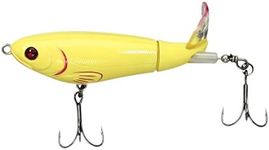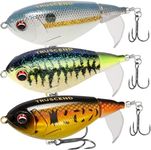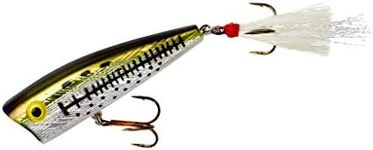Buying Guide for the Best Topwater Bass Lures
Choosing the right topwater bass lure can make your fishing experience much more enjoyable and successful. Topwater lures are designed to float on the surface of the water and attract bass by mimicking the movement of prey. The key to picking the best lure for you is understanding the different features and how they match your fishing style, the water conditions, and the behavior of the bass in your area. By learning about the main specifications, you can select a lure that increases your chances of a great catch.Lure TypeTopwater lures come in several types, such as poppers, walkers, prop baits, and frogs. Each type creates a different action on the water's surface. Poppers make a splashing noise, walkers zigzag back and forth, prop baits spin and churn the water, and frogs are designed to move through heavy cover. The type you choose should match the conditions you fish in and the way you like to fish. For example, if you fish in weedy areas, a frog might be best, while open water might call for a walker or popper.
SizeThe size of a topwater lure affects how visible and appealing it is to bass. Smaller lures are less intimidating and work well when bass are feeding on small prey or are being cautious. Larger lures create more commotion and can attract bigger, more aggressive bass. If you’re fishing in a place with lots of small baitfish, go for a smaller lure. If you want to target bigger bass or fish in murky water, a larger lure might be more effective.
ColorColor is important because it helps the lure stand out or blend in, depending on the conditions. Natural colors like silver, white, or green work well in clear water and on sunny days, as they mimic real prey. Bright or dark colors are better for murky water or low-light conditions, as they are easier for bass to spot. Think about the water clarity and the typical prey in your fishing spot when choosing a color.
ActionAction refers to how the lure moves on the water’s surface. Some lures create a lot of noise and splash, while others move quietly and subtly. Lures with loud, erratic action are good for attracting bass from a distance or in rough water. Subtle action is better for calm days or when bass are easily spooked. Match the action to the mood of the fish and the water conditions for the best results.
Hook DesignThe hook design affects how well the lure hooks and holds onto a bass. Some lures have exposed treble hooks, which are great for open water but can get snagged in weeds. Others, like frog lures, have hooks that are less likely to snag, making them better for fishing in heavy cover. Choose a hook design that matches the type of water you’ll be fishing in and your comfort with removing hooks from fish.
BuoyancyBuoyancy determines how well the lure floats and how it sits on the water. Some lures float high and stay on the surface even when paused, while others may sink slightly or sit lower in the water. High-floating lures are good for creating a lot of surface disturbance, while lower-floating lures can look more natural to cautious bass. Consider how you want your lure to behave when you stop reeling and what will look most appealing to the fish in your area.

